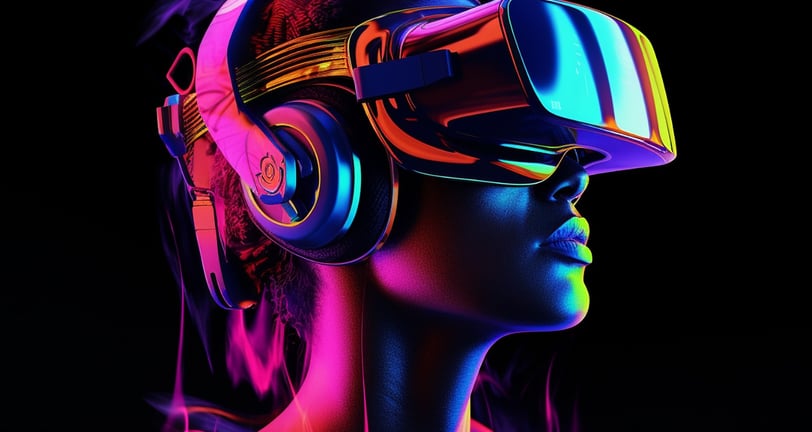
What is XR? The Next Frontier of Human Experience
Dive into the future of technology with Extended Reality (XR)! Explore the captivating world of Virtual Reality (VR), Augmented Reality (AR), and Mixed Reality (MR). Discover how XR is revolutionizing industries like gaming, education, healthcare, and more. Uncover the challenges and opportunities that lie ahead as we navigate this exciting new frontier.
TECHARVRTRENDS
Anubhaw Pandey
5/8/20242 min read


XR: The Next Frontier of Human Experience
Understanding XR
Extended Reality (XR) is an umbrella term encompassing a range of technologies that blend the physical and digital worlds. It comprises three primary components:
Virtual Reality (VR): Immersive digital environments that replace the real world.
Augmented Reality (AR): Digital overlays on the real world, enhancing perception.
Mixed Reality (MR): A hybrid of VR and AR, where digital and physical objects coexist and interact.
The Power of XR
XR technologies are revolutionizing various industries and reshaping our daily lives. Here are some key applications:
Gaming: Immersive gaming experiences that transport players to fantastical worlds.
Education: Interactive and engaging learning experiences that enhance knowledge retention.
Healthcare: Medical training, surgical simulations, and therapeutic applications.
Architecture and Design: Virtual walkthroughs of buildings and spaces before construction.
Retail: Virtual showrooms and product visualizations.
Manufacturing: Remote assistance, training, and quality control.
The Future of XR
The future of XR is incredibly promising, with advancements in hardware, software, and content creation driving its widespread adoption. Some key trends to watch include:
High-Fidelity Experiences: More realistic and immersive XR experiences, thanks to advancements in display technology, haptics, and spatial audio.
AI-Powered XR: Artificial intelligence will enhance XR experiences by enabling real-time content generation, personalized interactions, and intelligent adaptation to user preferences.
XR as a Social Platform: XR platforms will emerge as social hubs, allowing people to connect and collaborate in virtual spaces.
XR in the Workplace: XR will become an integral part of the workplace, enabling remote collaboration, training, and productivity.
Challenges and Opportunities
While XR holds immense potential, it also faces challenges such as:
Technical Limitations: Current hardware and software limitations can hinder the full potential of XR experiences.
Content Creation: Creating high-quality XR content requires significant resources and expertise.
User Experience: Ensuring comfortable and enjoyable XR experiences is crucial for widespread adoption.
Despite these challenges, the opportunities presented by XR are vast. By addressing these issues and continuing to innovate, we can unlock the full potential of this transformative technology.
Conclusion
XR is poised to reshape the way we interact with the world. From gaming and entertainment to education and healthcare, XR has the power to revolutionize industries and improve our lives. As technology continues to advance, we can expect to see even more groundbreaking applications of XR, making it an essential part of our future.
